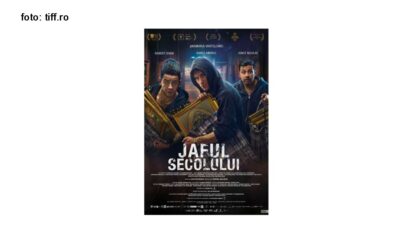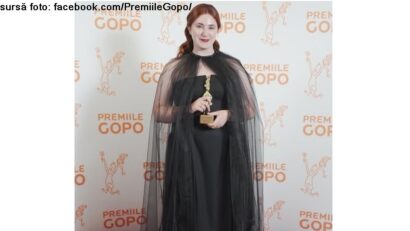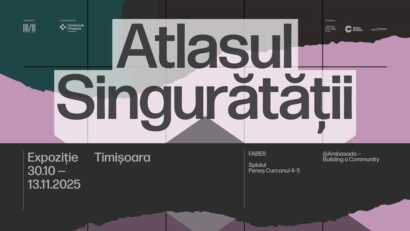Romanian literature under the spotlight at the Istanbul Book Fair
Held between November 7 and 10, the International Book Fair in Istanbul hosted Romania as its Guest of Honour.

Corina Sabău, 28.11.2015, 13:58
Held between
November 7 and 10, the International Book Fair in Istanbul hosted Romania as
its Guest of Honour. The motto of this year’s edition was We owe you a few
words. Romania had a complex agenda, featuring well-established contemporary
authors. Gabriela Adamesteanu, Matei Visniec, Dan Lungu, Octavian Soviany,
Carmen Musat, Daniel Cristea-Enache, Florin Bican, Lucian Dan Teodorovici, Radu
Vancu, Vasile Ernu and Alexandru Matei are some of the writers who presented
their volumes and interacted with the reading public that visited Romania’s
pavilion.
Throughout the
entire duration of the Istanbul Book Fair, Romania also hosted a series of
debates featuring literary figures from Romania and Turkey and book launches,
both at its pavilion and at the Romanian Cultural Institute in Istanbul. Among
them were Dan Lungu’s I’m a Communist Biddy!, brought out in Turkish by
Bence Kitap Publishers and Florin Irimia’s Dark Windows, published by
Aylak Adam. Children’s events were also held. The Uskudar Tekel Stage and the
Sainte Pulcherie French High School in Istanbul played host to two plays by
Matei Visniec, attended by the playwright himself: The Chekhov Machine
and The Word Progress on my Mother’s Lips doesn’t Ring True.
The debate that
stirred the public’s interest the most was entitled Children’s literature – a
serious matter and was attended by Oana Ispir from the Illustrators’ Club and
writers Florin Bican and Vasile Ernu. Asked what exactly prompted him to
approach children’s literature, Vasile Ernu said he had always been a fan of
children’s literature, and that there is an important moment in childhood when
reading becomes paramount:
I started looking
into this phenomenon out of sheer interest. I wanted to understand why
children’s books are so important. The idea that the 1990s brought about more
openness in this respect was false, because the book market only felt more
caged. Whatever was available in terms of children’s books were works by
foreign authors translated into Romanian. People were deluded into thinking the
market was very diverse, whereas in fact all you could find were Disney-like
books. And don’t get me wrong, I have nothing against Disney stories, I grew up
with this kind of stories myself, but we’re left with only one choice. And the
worst part is that books by Romanian authors started slowly disappearing. I
think what’s important is that we tell our stories plainly, so children can
understand them, and to share with them our opinions and concerns.
Another question journalist Carmen Musat asked those who
took part in the debate was if we could set up a hierarchy between image and
text, to what extent the text can compel its illustration, and the other way
round. Briefly, which of the two came first, the text or the image? Writer and
translator Florin Bican believes that the text came first, unmistakably, but
that things shouldn’t be like this any longer. In order to encourage communication
between writers and illustrators, he came up with the idea that writers and
graphic artists should work together. The outcome of that kind of joint work is
entitled The Bookatteria of Texts and Images. An illustrated children’s
stories anthology, brought out by the Pro Editura Print and Publishers. It is
a book-manifesto, it is the proof that there still are fresh resources as
regards Romanian original texts for children, but also the potential for
quality books illustration. In the void created by the disappearance of
Romanian books for children in the 1980s, Bookatteria demonstrates we can still
bridge the gap between ourselves and an apparently lost generation. With
details on that, here is writer Florin Bican again:
At the suggestion
of Oana Ispir, the one who initiated the Illustrators’ Club, we suggested
writers that they should try their hand at writing texts for children as well,
to be used by illustrators in their attempt to make the most of their talent
and imagination. And I daresay it was a happy collaboration, illustrators were
happy to illustrate texts at the suggestion of writers, while in turn, authors
were delighted to see what kind of illustration their stories were capable of
generating. Among the writers who this
year took part in the Book Fair in Istanbul, three could also be found in this
volume, as authors of children’s stories: Vasile Ernu, Doina Rusti and myself,
Florin Bican. The idea of the book was to draw attention to the fact that in
Romania, there are both publishers
and illustrators for children. When
asked if literature for children entailed a different kind of approach
regarding the recipient, here is what Vasile Ernu answered:
Indeed, when you are an author of literature and you also
start writing for children you realize things tend to become even more
intricate. Because in time I understood
it was easy to lie to the grown-ups, but impossible to lie to children. If you
succeed in writing a book children think is captivating, that is something
really great. Because you need to surprise children, and children have not just
as yet become altered by lies as we are.. And a book for children comes out as
a whole, with the child still unable to tell the text from the image, like we
do. That is why the word illustrator sounds a bit inappropriate when we speak
about drawings for those books for children. The one who writes, as much as the
one who does the drawings, both of them are authors.
Romania’s participation as a guest of honour
in the Istanbul International Book Fair was organised jointly by the Ministry
of Culture and the Dimitrie Cantemir Cultural Institute in Istanbul.
(Translated by: E. Nasta; edited by: M. Igantescu)






























